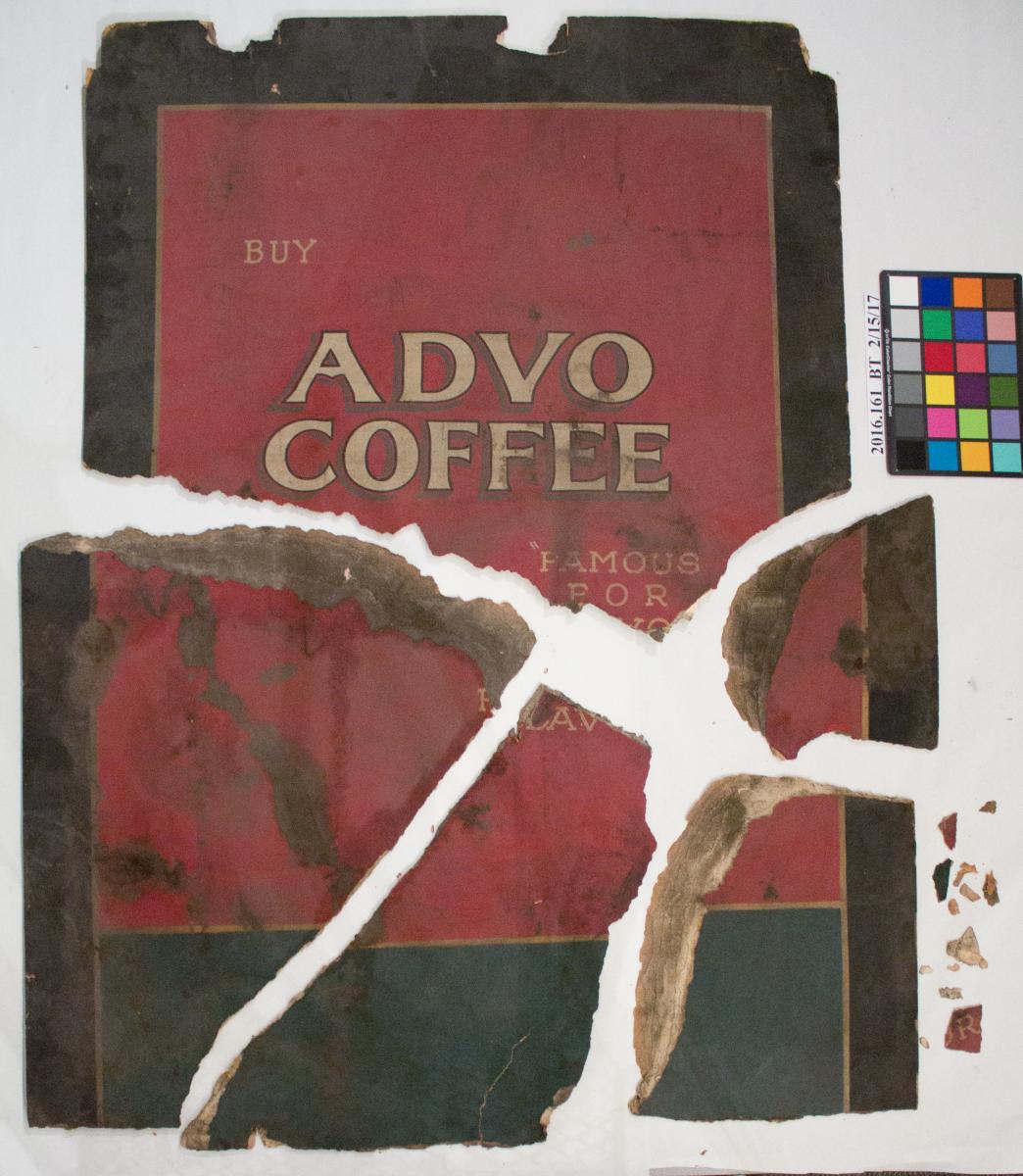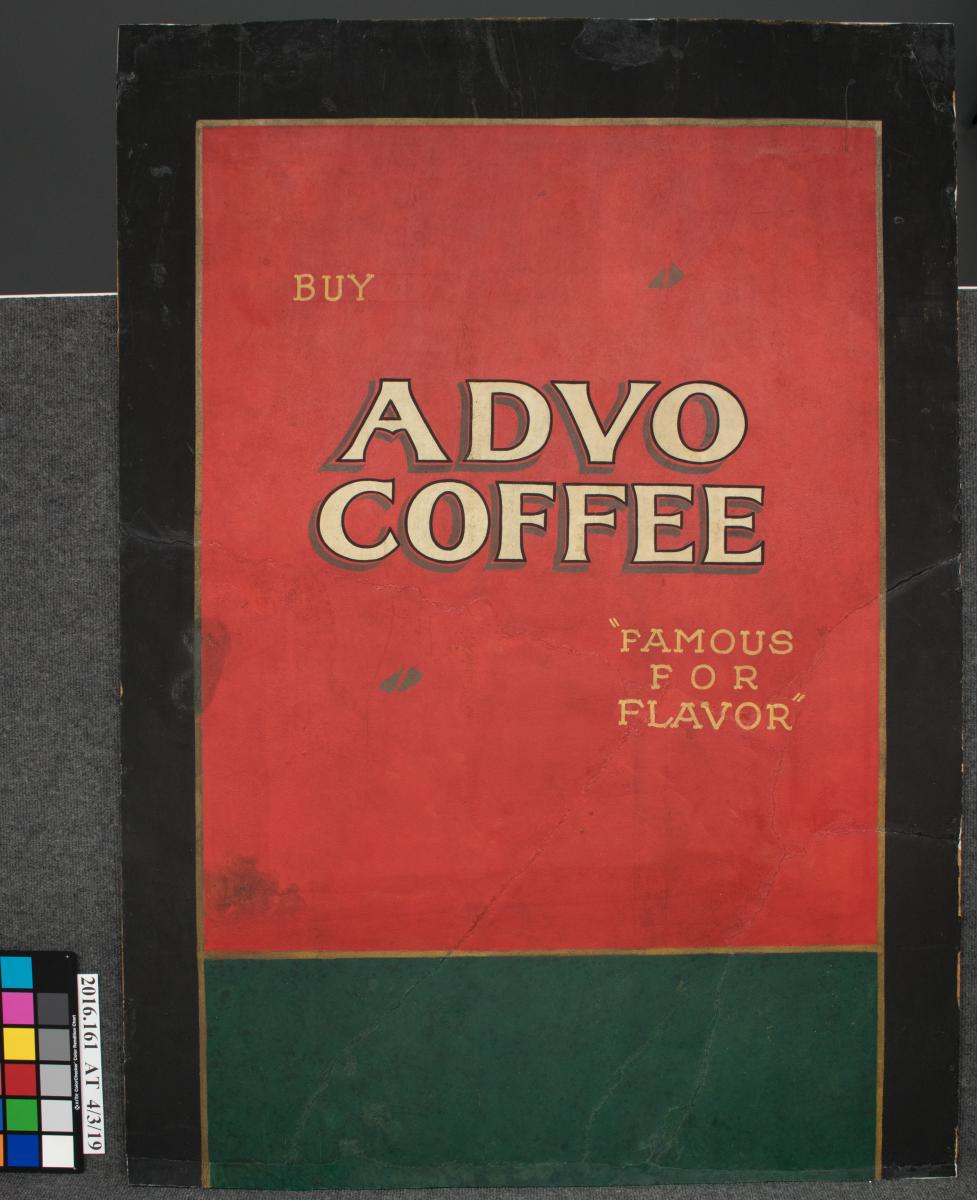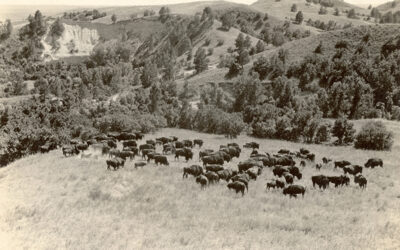This Great Depression Era hand-painted ad for Advo Coffee was in bad shape when it arrived at our Ford Conservation Center.
It was split into pieces, warped, and caked in dirt. It took the combined expertise of three conservators to give this piece of history new life.
The old saying “One man’s trash is another man’s treasure” is exemplified in a recent project at the Ford Center. So is the phrase, “All hands on deck!”
This object in question is a hand painted advertisement for Advo Coffee, a local coffee brewed by McCord and Brady Co in Omaha, and likely from the Great Depression Era. The ad reads “Buy Advo Coffee / “Famous for Flavor” ”.
The sign was originally nailed to the ceiling of the owner’s basement, obscured by coal dust. When he was doing renovations, and began to tear down the ceiling, he discovered the ad, and didn’t want to throw it away despite the dirt and damage. The owner was able to find most of the pieces, although two pieces at the top and another along the bottom were not recovered.

Coffee ad before treatment
The coffee ad was split into 5 large, irregular shaped pieces. In addition to the major tears in the ad, the large pieces are also warped. This may have occurred while the ad was still nailed onto the basement ceiling; basements tend to have more drastic fluctuations in temperature and humidity than other areas of a house. Over time these fluctuations can cause distortions in paper-based materials, as organic components expand and contract. The ad was also covered in a thick and visible layer of dirt, dust, and black coal residues.
While certainly a challenge, the project was not hopeless. Due to the extensive damage and the materials from which the ad was made, the staff at the Ford Center had to work collaboratively between all three labs: Objects, Paper and Paintings. They decided to break the project into two phases. The piece would require extensive cleaning of the grime and coal dust in order to be tested for structural stabilization.
The ad was cleaned of dirt and coat dust on the front and back. This was carried out by vacuuming with brushes, the use of cosmetic sponges and finally with wet cleaning after the paints had been thoroughly tested. Once the pieces were cleaned, they could be tested to see if they could be humidified to get them to lay more in plain. The pieces were fitted together as closely as possible and put under weighted glass for months to get them as flat as possible.
Coffee ad during treatment with cleaned area.
Even being under weights for months, the board was too thick and the warpage too extensive to completely flatten. Therefore, the lower areas needed to be built up with matboard and the whole ad attached to a rigid support.
Part of the American Institute of Conservation’s Code of Ethics is that treatments should be as reversible as possible. If part of a treatment should fail, or the object needs to be retreated for any reason in the future, any current treatment would need to be reversed to the extent possible. Unfortunately, with the treatment of the coffee ad, the weight, thickness, and damage from tears necessitated the use of strong adhesives to ensure the ad would be securely adhered to the panel. If for some reason in the future the ad would need to be taken off the panel, it would be very difficult to remove. Physical damage to the back side of the ad would be unavoidable and would alter the structure of the artifact. There was no safe AND easily reversible method for adhering the ad to a support panel. This was discussed with the client before treatment was continued and he agreed to move forward.
Video of Objects Conservator, Rebecca Cashman, and Paper Conservator Hilary LeFevere, attaching the coffee ad to the new support board.
As mentioned above, some warped areas of the ad were supported from behind by layers of matboard. This allowed them to more easily fit together with the other pieces. The sections were joined and adhered to one another using one type of adhesive chosen through testing. The ad was then adhered to a custom panel comprised of a wood core with an aluminum face using a different adhesive.
Paper Conservator, Hilary LeFevere, fills the cracks in the coffee ad with Japanese tissue paper.
Toned paper fills were applied to the cracks and the areas of loss so the ad appears more cohesive. All the fills and media losses were inpainted in order to reintegrate the image. Now that treatment is complete, the client will be getting the ad framed for display.

Coffee ad during treatment with losses and cracks filled before inpainting.
What some would have seen as garbage, scraps to be thrown in the dumpster, was given new life through the hard work and collaborative talents of the Ford Center staff.

The final product! The Coffee Ad after treatment.



